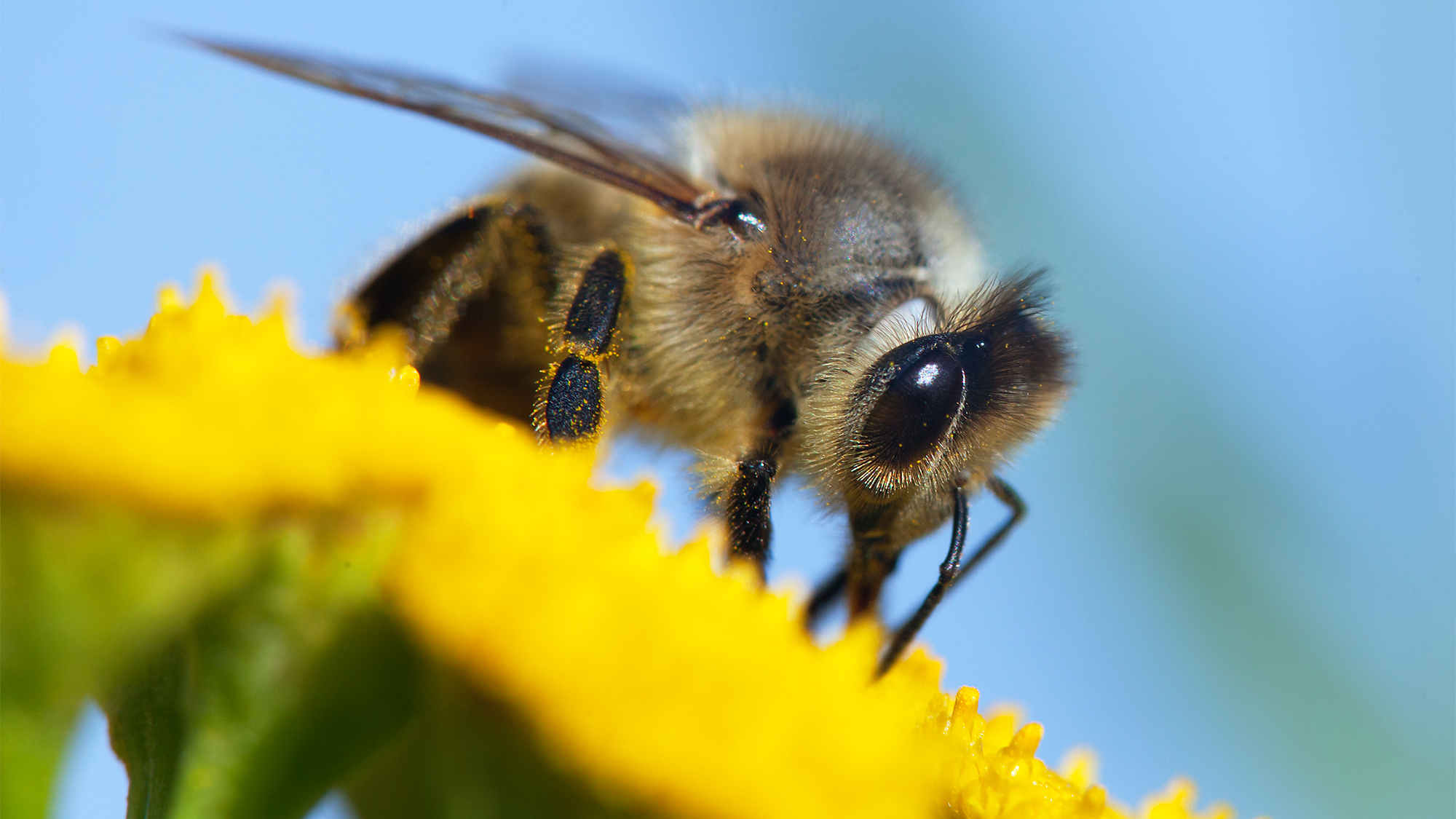

If humans want to learn more about our higher brain functions and behaviors, some scientists think we should look towards insects—including everything from busy bees to social butterflies to flies on the wall. A study published May 5 in the journal Science Advances found three diverse, specialized Kenyon cell subtypes in honey bee brains that likely evolved from one single, multi-functional Kenyon cell subtype ancestor.
[Related: Older bees teach younger bees the ‘waggle dance.’]
Kenyon cells (KCs) are a type of neural cell that are found within a part of the insect brain. These cells are involved in learning and memory, particularly with the sense of smell called the mushroom body. They are found in insects in the large Hymenoptera order from more “primitive” sawflies up to the more sophisticated honey bee.
“In 2017, we reported that the complexity of Kenyon cell subtypes in mushroom bodies in insect brains increases with the behavioral diversification in Hymenoptera,” co-author and University of Tokyo graduate student said in a statement. “In other words, the more KC subtypes an insect has, the more complex its brain and the behaviors it may exhibit. But we didn’t know how these different subtypes evolved. That was the stimulus for this new study.”
In this study, the team from University of Tokyo and Japan’s National Agriculture and Food Research Organization (NARO) looked at two Hymenoptera species as representatives for different behaviors. The more solitary turnip sawfly has a single KC subtype, compared to the more complex and more social honey bee that has three KC subtypes.
It is believed that the sawfly’s more “primitive” brain may contain some of the ancestral properties of the honey bee brain. To find these potential evolutionary paths, the team used transcriptome analysis to identify the genetic activity happening in the various KC subtypes and speculate their functions.
[Related: Like the first flying humans, honeybees use linear landmarks to navigate.]
“I was surprised that each of the three KC subtypes in the honey bee showed comparable similarity to the single KC type in the sawfly,” co-author and University of Tokyo biologist Hiroki Kohno said in a statement. “Based on our initial comparative analysis of several genes, we had previously supposed that additional KC subtypes had been added one by one. However, they appear to have been separated from a multifunctional ancestral type, through functional segregation and specialization.”
As the number of KC subtypes increased, each one almost equally inherited some distinct properties from a single ancestral KC. The subtypes were then modified in different ways, and the results are the more varied functions seen in the present-day insects.
To see a specific behavioral example of how the ancestral KC functions are present in both the honey bee and the sawfly, they trained the sawflies to partake in a behavior test commonly used in honey bees. The bees, and eventually sawflies, learned to associate an odor stimulus with a reward. Despite initial challenges, the team got the sawflies to engage in this task.

Then, the team manipulated a gene called CaMKII in sawfly larvae. In honey bees, this gene is associated with forming long-term memory, which is a KC function. After the gene manipulation, the long-term memory was impaired in the larvae when they became adults, a sign that this gene also plays a similar role in sawflies. CaMKII was expressed across the entire single KC subtype in sawflies, but it was preferentially expressed in one KC subtype in honey bees. According to the authors, this suggests that the role of CaMKII in long-term memory was passed down to the specific KC subtype in the honey bee.
Even though insect and mammalian brains are very different in terms of size and complexity, we share some common functions and architecture in our nervous systems. By looking at how insect cells and behavior has evolved, it might provide insights into how our own brains evolved. Next, the team is interested in studying KC types acquired in parallel with social behaviors, such as the honey bee’s infamous “waggle dance.”
“We would like to clarify whether the model presented here is applicable to the evolution of other behaviors,” co-author and University of Tokyo doctoral student Takayoshi Kuwabara said in a statement. “There are many mysteries about the neural basis that controls social behavior, whether in insects, animals or humans. How it has evolved still remains largely unknown. I believe that this study is a pioneering work in this field.”
